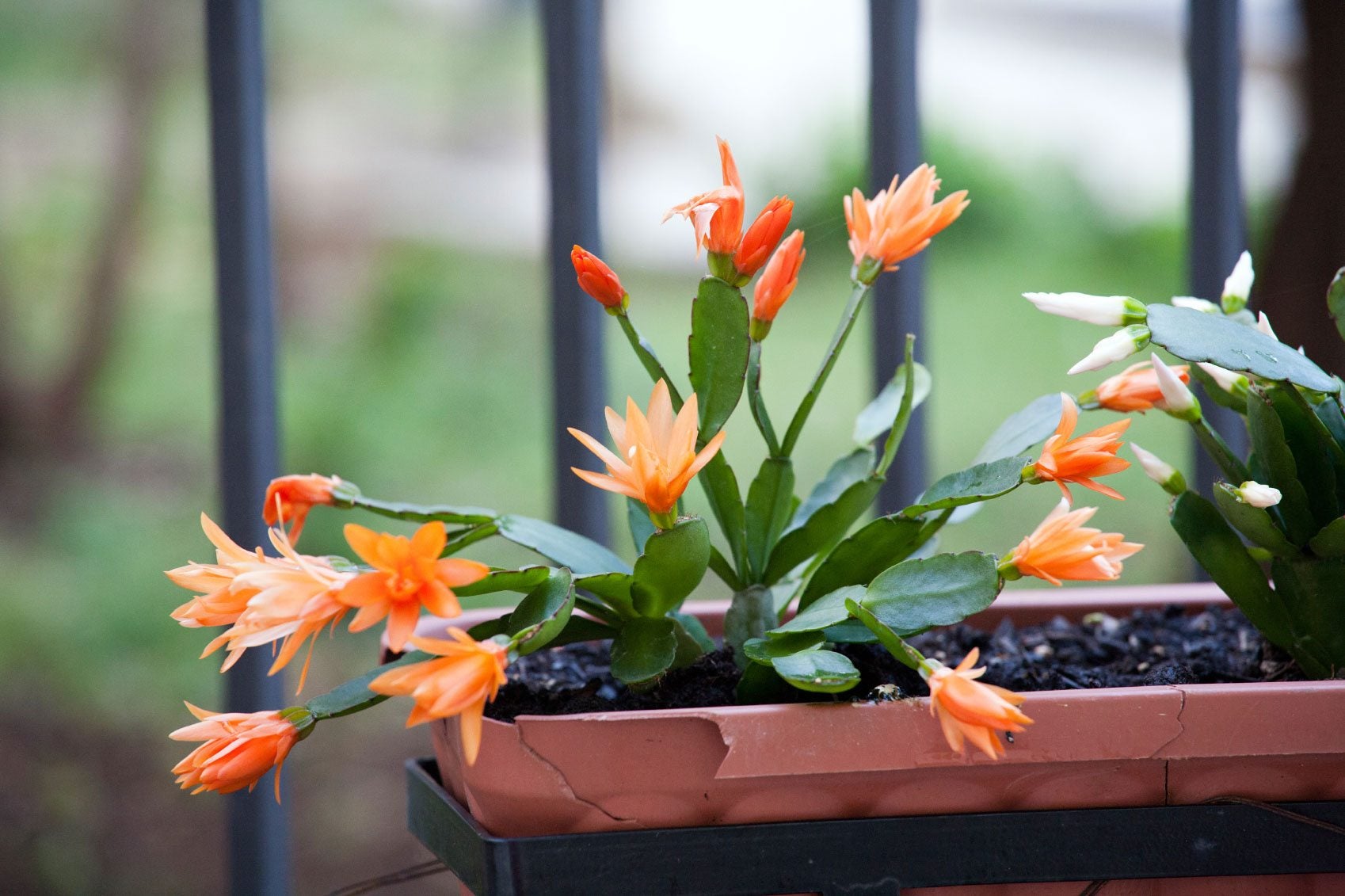Christmas Cactus Cold Tolerance - How Cold Can Christmas Cactus Get


When you think of cactus, you probably envision a desert with heat wavering vistas and blazing sun. You aren't too far off the mark with most cacti, but the holiday cacti actually flower better in slightly cooler temperatures. They are tropical plants that need slightly cooler temperatures to set buds, but that doesn't mean that Christmas cactus cold tolerance is high. Christmas cactus cold damage is common in cold, drafty homes.
Christmas Cactus Cold Hardiness
Holiday cacti are popular houseplants that bloom around the holiday in their name. Christmas cacti tend to flower around the winter months and produce bright, bountiful, pink blooms. As exterior plants, they are only hardy in USDA zones 9 to 11. How cold can Christmas cactus get? Cold hardiness in Christmas cactus is greater than in some cacti, but they are tropical. They can't tolerate frost, but they need cold temperatures to force blooms. As a tropical plant, Christmas cacti likes warm, balmy temperatures, moderate to low moisture levels, and bright sun. It likes to be warm, but you should keep the plant away from extremes such as drafts, heaters, and fireplaces. Perfect nighttime temperatures range from 60 to 65 degrees F. (15-18 C.). To force bloom, place the cactus in a cooler area in October where temperatures are about 50 degrees F. (10 C.). Once the plants are in bloom, avoid sudden temperature fluctuations which can make Christmas cacti lose their flowers. In summer, it is completely fine to take the plant outdoors, somewhere with dappled light initially and shelter from any wind. If you leave it outside too far into fall, you can expect Christmas cactus cold damage.
How Cold Can Christmas Cactus Get?
To answer the question, we need to consider the growing zone. The United States Department of Agriculture provides hardiness zones for plants. Each hardiness zone illustrates the average annual minimum winter temperature. Each zone is 10 degrees F. (-12 C). Zone 9 is 20 to 25 degrees F. (-6 to -3 C.) and zone 11 is 45 to 50 degrees F. (7-10 C.). So, as you can see, the cold hardiness in Christmas cactus is fairly broad. That being said, frost or snow is a definite no-no for the plant. If it is exposed to freezing temperatures for more than a quick nip, you can expect the pads will be damaged.
Treating Christmas Cactus Exposed to Cold
If the cactus is out too long in freezing temperatures, the water stored in its tissues will freeze and expand. This damages the cells inside the pads and stems. Once the water thaws, the tissue contracts but it is damaged and doesn't hold its shape. This results in limp stems, and eventually dropped leaves and rotten spots. Treating Christmas cactus exposed to cold requires patience. First, remove any tissue that appears to be badly damaged or rotten. Keep the plant lightly watered, but not soggy, and place it in an area around 60 degrees F. (15 C.), which is moderately warm but not hot. If the plant survives six months, give it some houseplant fertilizer that has been diluted by half once per month during its growth months. If you put it outside the next summer, just remember Christmas cactus cold tolerance doesn't extend to freezes, so get it inside when those conditions threaten.
Gardening tips, videos, info and more delivered right to your inbox!
Sign up for the Gardening Know How newsletter today and receive a free copy of our e-book "How to Grow Delicious Tomatoes".

Bonnie Grant is a professional landscaper with a Certification in Urban Gardening. She has been gardening and writing for 15 years. A former professional chef, she has a passion for edible landscaping.
-
 Looking For Plants To Give You The Soft And Fuzzies? Try These 5 Fuzzy Leaf Plant Options
Looking For Plants To Give You The Soft And Fuzzies? Try These 5 Fuzzy Leaf Plant OptionsLovers of texture, drama, silver foliage and tactile plants will adore these special sensory garden additions. These fuzzy leaf plant options will leave you all aglow
By Susan Albert
-
 Get Ready For A Summer Of Hummers! Grow These Full Sun Hummingbird Plants and Flowers
Get Ready For A Summer Of Hummers! Grow These Full Sun Hummingbird Plants and FlowersIf you’re lucky enough to enjoy a sunny backyard, make sure you are maxing out on your pollinator opportunities and grow these full sun hummingbird plants and flowers
By Tonya Barnett